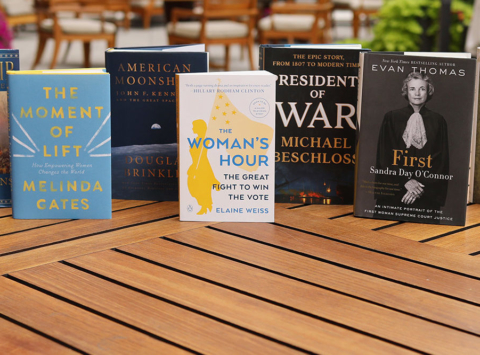He (and I use that pronoun intentionally) who tells the story owns the narrative. And the fact is, history has largely been written by men, for men. White men. It’s a truth we, at the Case Foundation, confronted directly and are trying to change through our #FacesofFounders campaign, as it pertains to entrepreneurs. The power of storytelling to document history, make lasting impressions and, in fact, set our default images is profound. And therefore, we need to disrupt the status quo of who tells the stories, about whom the stories are told, the images we assign to entire categories of people and, in doing so, directly confront our biases and work hard—with intention—to change them.
As we researched and designed our inclusive entrepreneurship movement, seeking to democratize entrepreneurship to people and places being left behind or out of business startup opportunities in America, we landed on three important roadblocks: access to social capital (mentorships, networks, accelerators); access to financial capital; and access to something we called “inspirational capital”—their inclusion in media stories, popular images of entrepreneurs or stories of entrepreneurship. Our #FacesofFounders campaign was a direct response to aggressively bust the myth that there weren’t already successful entrepreneurs of color and women entrepreneurs, as well as to inspire the next generation of talent required to drive America forward.
Key to driving that campaign forward was to confront the biases that exist in America, to understand that storytelling and images have played a huge role in reinforcing those biases and to use the power of storytelling, and a set of modernized images, to change that dynamic. We put that power to work in our CEO Jean Case’s TED talk last fall.
As we close out February and our celebration of Black History Month, and in celebration of what I hope is a revolution to level the playing field for all individuals—regardless of their race, gender, sexual orientation or birthplace—to participate equally in our society and economy, I’d like to share three other TED Talks that continue to inspire me to #GetinTheArena and both deploy the power of storytelling and extend the privilege of the storyteller.
This stunning talk by Chimamanda Ngozi Adichie walks us through a long history of literature, news stories and images that have built a singular story around events and people, particularly people of color. She reminds us that the problem is that, beginning as children, these are the stories and images that set our default positions. Worse, they rob people of dignity, reduce opportunities for equality and accentuate our differences more than our similarities. Her parting words? Stories matter; let’s use them to empower, humanize and repair broken dignity.
Vernā Myers delivers a hard-hitting punch: get out of denial, “color blindness” is a false ideal…a distraction from doing the real work required to reboot our biases. She walks us through the world of brain auto-association with research showing that people—all people—associated white images more often with positive and black images more often with negative. Seventy percent of white people preferred images of white people; 50 percent of black people did too. Whoa! Beyond just the sheer power of her talk, she deploys a tactic that is intentionally intended to change that auto-association—throughout her entire talk, images of beautiful, bold, everyday black men are displayed behind her. Myers challenges us to do three things: (1) accept that bias exists—it’s not that it exists, it’s what we do with it; (2) move toward young black men, not away from them; move toward your discomfort and expand your bubble—just try!; and (3) when you see something, say something—good people can say wrong things, and if not confronted, biases will continue and be passed onto future generations. A must-watch!
Mellody Hobson tells us in this captivating talk that embracing and deploying diversity—of race, gender, intellect, experience—is the smart thing to do, not just the right thing to do. Like Myers, Hobson encourages us to deal with color head on…to deal with its discomfort and relax into it…to be “color brave” if we believe in equal opportunity. Her three calls to action are things most of us can do today: (1) be intentional in hiring decisions—every opportunity you get; (2) observe your environment with intention, and invite people into your life that don’t look like you, live like you, think like you—they will challenge your assumptions and beliefs; and (3) be brave.
…
Let’s not forget that Black History Month itself was created to rewrite a history that seemed to exclude black people’s role in advancing American innovation, entrepreneurship, society and economy. Each of us, in our own way—big or small—can be part of a movement to drive a more inclusive nation. Be fearless. It’s worth it.





